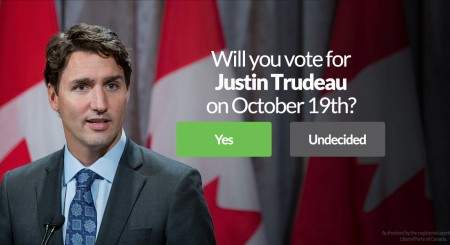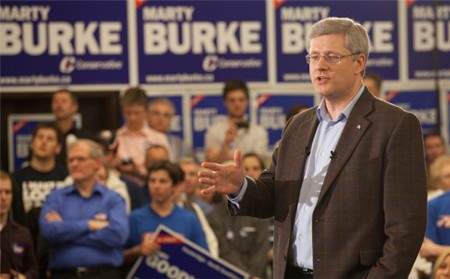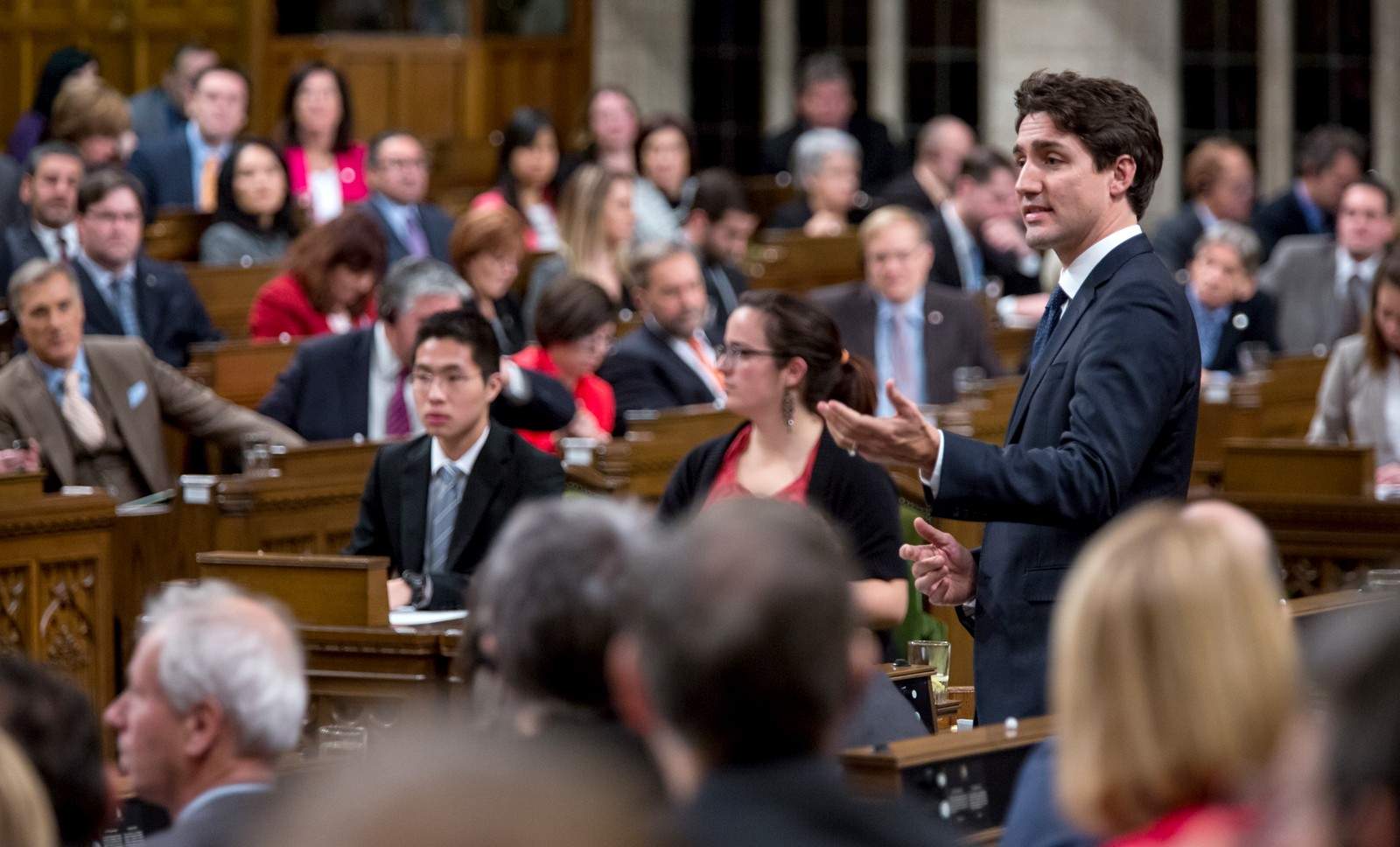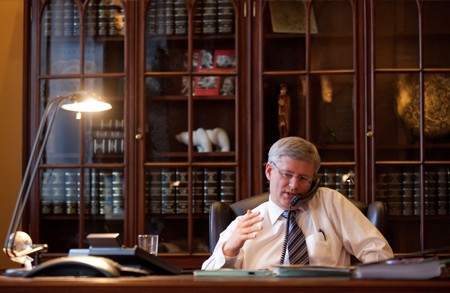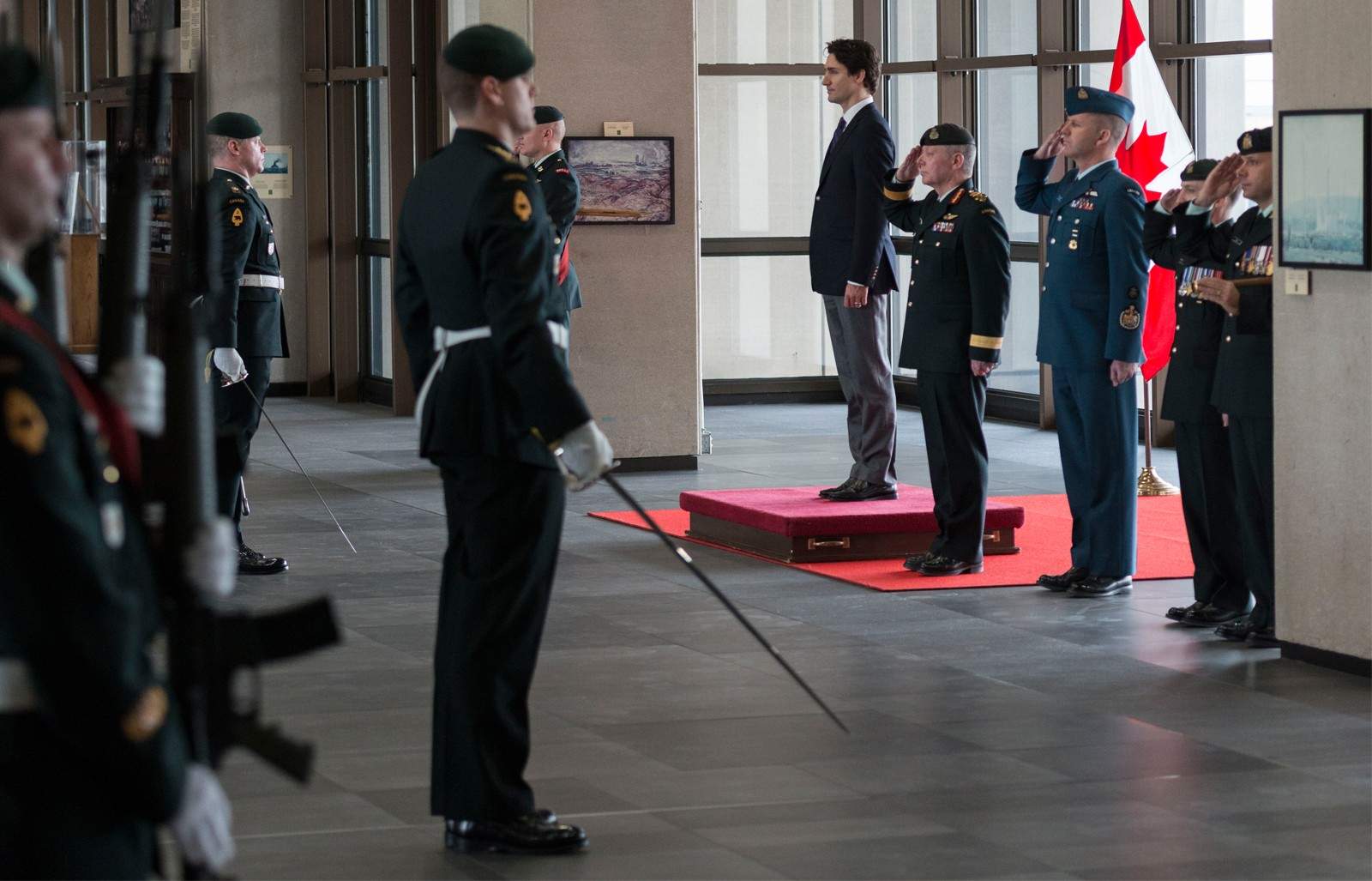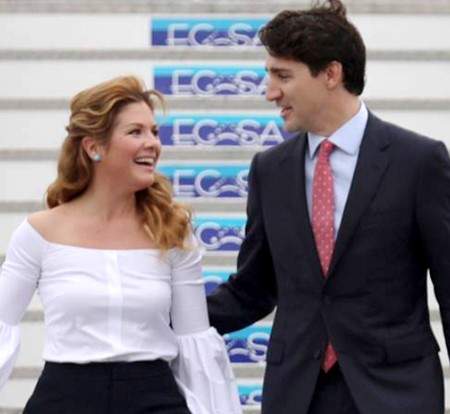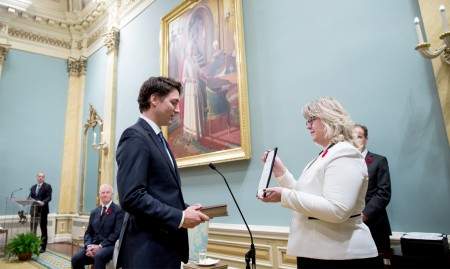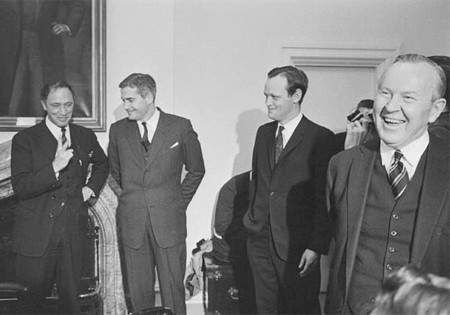The Prime Minister of Canada
While the Queen may be Canada’s head of state, and the governor general the Queen’s ceremonial stand-in, it’s the prime minister who truly rules Canada. Known as the nation’s head of government, his office is said to be one of the most powerful leadership positions in any western democracy, meaning a great deal of Canadian political life revolves around his deeds and decisions.
How is the Prime Minister of Canada Elected?
As explained in more detail in the Parliamentary system chapter, during a Canadian federal election voters across Canada elect members to fill the 338 seats in the House of Commons. The leader of the political party who wins the most seats is then summoned by the governor general and sworn in as prime minister shortly after the election concludes. He or she can keep getting re-elected in this manner forever, or they can lose office once a different party wins the majority of seats instead.
Parties generally have high standards for who they are willing to make their leaders, so most Canadian prime ministers are accomplished politicians who have been involved in national politics for quite some time. Usually, they’ll be a former cabinet minister (see below) who had some track record of accomplishment serving in the administration of a prior PM. Less commonly, they may be figures who earned their fame outside elected politics, in a field such as business, law, academia, the civil service or diplomacy. Many prime ministers are some combination of both.
Powers of the Prime Minister of Canada
To best understand the powers of the Canadian prime minister, it may be most useful to think of the PM as a person who wears several different hats and plays several different roles within the Canadian political system. A large part of the reason why the prime minister’s office is so powerful is precisely because the PM’s authority extends into many different areas of government and is not subject to many limitations on his ability to make decisions.
Leader of the Largest Party in Parliament
All Canadian prime ministers are also members of parliament, and the prime minister of Canada sits and votes in the House of Commons just like the other 337 members. As leader of parliament’s largest political party, however, he maintains tight control over all members of his parliamentary caucus (party members) and directs and oversees the entire parliamentary process, including deciding which bills are introduced and which laws are passed.
As mentioned in the political parties chapter, party discipline in Canada is quite rigid and hierarchical, meaning individual members of parliament have little political independence and generally just vote with their party leader the vast majority of the time. Since the PM is the most powerful party leader in parliament, the House of Commons (and the Senate) is thus very deferential to the prime minister’s agenda, and virtually no laws are passed in Canada unless the PM has had at least some hand in creating them. Exceptions only occur in rare cases when parliament is very closely divided among three or more parties and the PM’s party controls only a narrow plurality of seats in the House (a situation known as a “minority government“). In such circumstances, the prime minister will have to rely on the votes of at least one other political party in order to get anything passed, meaning successful bills will have to be the result of some degree of multi-party compromise.
Prime Minister Trudeau answers questions in the House of Commons.
Justin Trudeau/Flickr
Head of the Executive Branch
Under the British traditions that Canada’s political system is based on, the prime minister, as the elected head of government, exercises the powers that used to be granted to the king or queen back in the old days. And since monarchs used to be quite powerful, so is the prime minister today. These sorts of powers — the powers associated with ruling or running the country on a day-to-day basis, are known as executive powers, and the prime minister is head of the executive branch of the Canadian government.
The prime minister is responsible for making the sort of everyday decisions that are required to manage the large Canadian government, including decisions involving the hiring of other government officials (see below), assigning projects to the various departments of the bureaucracy, and representing the government of Canada in its interaction with provincial and local governments, as well as the governments of other countries.
To help with these tasks, the prime minister appoints a cabinet of other members of parliament. Each cabinet minister has authority in a different specific realm of government, such as finance, foreign relations, healthcare, and so on. The prime minister’s cabinet is quite big these days, usually 30 people or more, so the cabinet is also split into many smaller cabinet committees to deal with overlapping areas of concern. The cabinet as a collective is also constitutionally required to make certain decisions, though in practice it’s the PM who decides “what cabinet has decided.” In addition to their formal cabinet, most PMs will also have a large staff of advisers who often hold just as much — if not more — power over the PM’s agenda. Staffers of this sort, who run what is known as the Prime Minister’s Office, or PMO, include people like the prime minister’s chief of staff, press secretary, communications advisers, lawyers, and other non-politicians who have earned his loyalty and trust.
The Prime Minister’s Cabinet
Here are eight of the current government’s most high-profile and influential cabinet ministers. Most of these people sit on the cabinet committee for Agenda, Results and Communications, which has the largest influence on the overall priorities of the government. Prime Minister Justin Trudeau (b. 1971) has placed a particular priority on appointing racial minorities, women, and immigrants to key cabinet positions. At this point in his tenure, most of Trudeau’s top cabinet ministers have already served in previous positions in his administration before getting promoted to their current job. It is common for prime ministers to do a high-profile cabinet shuffle at least once during their tenure in which all the cabinet ministers are rotated around and given new portfolios, with Trudeau’s most recent shuffle coming in July of 2023.
Chrystia Freeland, Deputy PM and Finance Minister
Freeland (b. 1968) is considered Prime Minister Trudeau's closest cabinet minister, sometimes dubbed his "minister of everything." Prior to politics, she worked as a high-profile journalist and international affairs commentator for many years in both Canada and the U.S. She was foreign minister until 2019, at which point she became deputy PM, and then finance minister in 2020. Parliamentary Riding: University-Rosedale, Ontario.
Mélanie Joly, Foreign Minister
Trudeau has cycled through many foreign ministers during his time in office, with Mélanie Joly (b. 1979) being his fifth. A former lawyer, Joly is a high-profile Montreal politician who comes from a well-connected political family in Quebec's largest city. She's long been considered one of the leading figures of the Trudeau administration and has held several key jobs in his government.
Parliamentary Riding: Ahuntsic-Cartierville, Quebec.
Bill Blair, Minister of Defence
A longtime police officer, Blair (b. 1954) gained a high profile as Toronto's chief of police from 2005 to 2015. After being elected to parliament in 2015, he has served in a variety of cabinet jobs in Prime Minister Trudeau's administration, all relating to public safety in some way.
Parliamentary Riding: Scarborough Southwest, Ontario.
Arif Virani, Attorney General
The attorney general is in charge of the department of justice, and the job always held by an experienced lawyer. Arif Virani (1971) has done legal work in a variety of different capacities, for a variety of different government agencies and organizations over the years, both in Canada and abroad. He's the son of Ismaili Indo-African refugees from Uganda, and Canada's first Muslim attorney general.
Parliamentary Riding:Parkdale-High Park, Ontario.
Anita Anand, President of the Treasury Board
The daughter of Indian immigrants, Anand (b. 1967) previously served as minister of defense. She is a graduate of Oxford University in England and worked as a law professor for many years before turning to politics. A prominent face in the Trudeau government, she also previously worked as minister of procurement during the Covid-19 pandemic.
Parliamentary Riding: Oakville, Ontario.
Gary Anandasangaree, Minister of Indigenous Relations
Trudeau has made reconciliation with Canada's aboriginal population one of the priorities of his government. So Anandasangaree's (b. ?) appointment to this job in 2023 was seen as an important display of trust from the prime minister. Historically, Indigenous affairs ministers tend to have some distance from the aboriginal community. Anandasangaree is the son of Tamil migrants from Sri Lanka and the first first Tamil-Canadian elected to parliament. He has been an prominent activist figure in that community.
Parliamentary Riding: Scarborough—Rouge Park, Ontario.
Steven Guilbeault, Minister of Environment
One of the more controversial members of Trudeau's cabinet, Steven Guilbeault (b. 1970) was a fairly extreme climate change activist prior to his election to parliament in 2019, known for getting arrested for his wild public stunts. He'll now be expected to balance the competing interests of Canada's environment with its economically powerful natural resource sector.
Parliamentary Riding: Laurier-Sainte-Marie, Quebec.
Mark Holland, Minister of Health
Mark Holland (b. 1972) previously served as the Liberal party's leader in the House of Commons from 2021 to 2023. A prominent career politician from the city of Pickering, where he is the former mayor, he has been in parliament since 2004, making him one of the cabinet's most experienced politicians.
Parliamentary Riding: Ajax, Ontario.
Powers of Appointment
In addition to the cabinet, the prime minister has the power to appoint a vast assortment of other officials in the Canadian government. This includes the governor general, all Canadian appeals court judges, including judges of the Supreme Court of Canada, heads of most departments and boards of the federal bureaucracy, the speaker and leaders of the Senate of Canada, as well as individual senators themselves, ambassadors, the heads of the Canadian armed forces, and a host of other senior officials in the Canadian government, such as the head of the federal election commission and the leader of the country’s central bank, the Bank of Canada.
Of course, in practice, even the most busybody prime minister doesn’t have the time to hire every single one of these individuals single-handedly. As a result, the less consequential a position is, the more likely the prime minister is to delegate the appointment to some other official more closely involved with the position in question, usually a cabinet minister or non-partisan hiring board.
Prime Minister Trudeau greeted by an honour guard at the National Defense Headquarters in Ottawa.
Kurt Visser/Flickr
Head of Foreign Policy and the Military
Foreign policy is the exclusive realm of Canada’s executive branch, and it is the prime minister of Canada, along with his foreign minister, who negotiates Canada’s relationship with other countries. At any important meeting of world leaders, such as a NATO summit or a meeting at the United Nations, it is the prime minister who represents and speaks for Canada.
and the decision to send the Canadian military to war is the sole prerogative of the prime minister. Though the controversial nature of military action means a vote of Parliament will often be taken to provide legitimacy and accountability to an overseas troop deployment, prime ministers are still the ultimate decider of where Canada’s soldiers are sent and which foreign army is attacked. Most of Canada’s senior military hierarchy is likewise appointed by the prime minister, including the Chief of Defence Staff, who serves as Canada’s top soldier.
Symbol of the Country
As the country’s leader, the prime minister is often called on to represent and embody the entire country, and perform a lot of miscellaneous, symbolic duties in addition to his political ones. Though technically the governor general and Queen are supposed to perform most of the country’s figurehead duties, these days the prime minister of Canada does most of the important ones. This includes sending messages of holiday greetings, meeting with accomplished Canadians like athletes or contest winners, touring hospitals to visit with sick or injured Canadians after a tragedy, formally opening a new, important building, and that sort of thing.
Most Canadian schoolchildren are taught from a young age to view the prime ministership of Canada as one of the most important symbols of their country, and appreciate the importance of men like John A. MacDonald (1815-1891) and Wilfrid Laurier (1841-1919) — even before they can understand politics. All but one of Canada’s banknotes features the portrait of a former prime minister, and across Canada there are a vast array of schools, parks, airports, and other buildings named in honour of the country’s past PMs.
Leaving Office
As discussed, the prime minister is the leader of the party who wins the most seats in the House of Commons following a Canadian parliamentary election. A prime minister can be voted out of power if enough Canadians vote out enough of his members of parliament in the next election.
But what happens if a prime minister dies or resigns before an election? In extreme situations, such as an assassination or terrorist attack, the government of Canada maintains an emergency order of succession to the prime minister’s office that ranks every member of the prime minister’s cabinet. Currently, the deputy prime minister, Chrystia Freeland (b. 1968) is first in line, though it should be noted that the idea of having a deputy prime minister is fairly recent. The position was only created in 1977 and abolished from 2006 to 2019. If it’s less of an emergency, the parliamentary caucus of the prime minister’s political party, which is to say, all its sitting members in the House and Senate, will assemble and elect one of their own to serve as acting prime minister. If there’s a longer window of opportunity — say, if the prime minister announces his planned date of resignation months in advance — the party will hold a formal national convention to pick a new leader, and all party members across the country will get to have a say.
Since the office of prime minister has no term limit and since Canadian elections are not held on fixed dates, prime ministerial resignations are common, and around half of all Canadian PMs have obtained the job via the party appointment process mentioned above. This is not without controversy, however. A PM who was installed by a small group of party insiders, rather than elected by the Canadian people, will often have his right to rule questioned if he stays in office too long. Luckily, the prime minister has the ability to call a federal election to seek a fresh mandate, and most party-appointed PMs chose to do this quite soon after their inauguration.
List of Prime Ministers
To learn more about the prime ministers of Canada, check out the prime minister biographies chapter in the history section. Or the chart of prime ministers in the data section.
More About the Prime Minister of Canada
